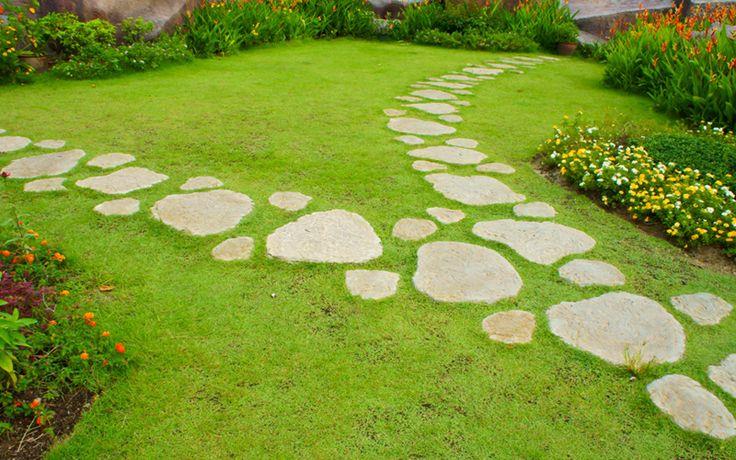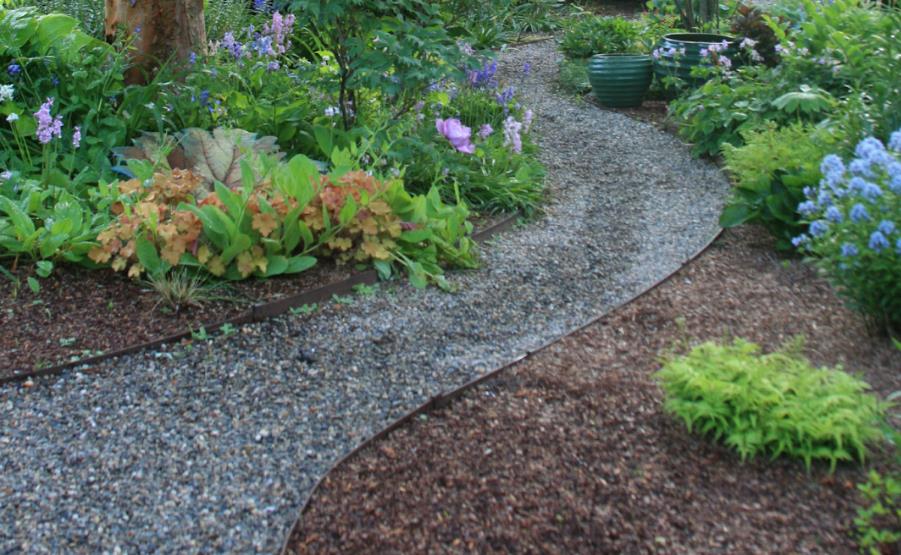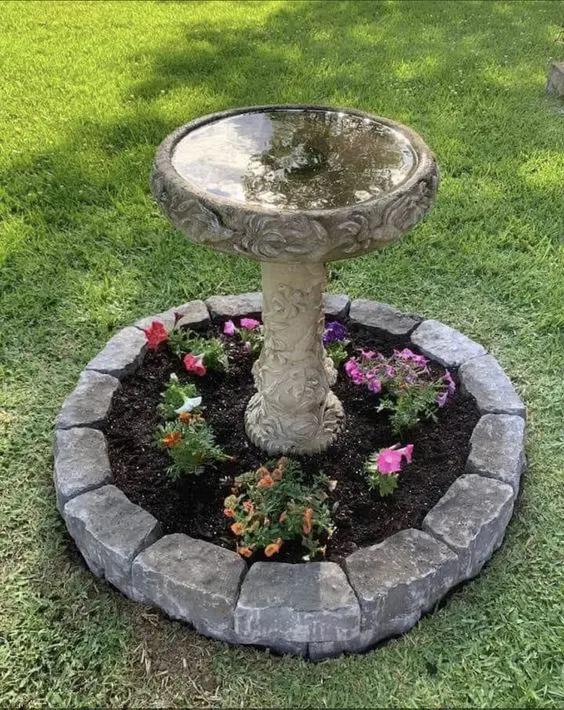Nothing pulls a yard together like a thoughtfully laid path that guides feet and eyes at once. By channeling foot traffic, paths shield delicate beds, define zones, and anchor focal points while opening every corner to strollers and wheelchairs. Choose materials that fit the local climate and drainage.
Permeable gravel or pavers on a layered stone base let rain soak in instead of pooling. Before breaking ground, shortlist garden path design ideas that respect slope, sun, and daily routes, then sketch alignments that link patios, sheds, and shady benches through gentle curves.
Follow proven landscaping pathways standards and simple garden path planning tips like edging for soil retention, and the result will be beautiful garden paths that read like an open invitation to wander.
Why Garden Paths Matter: Function Meets Aesthetic
Paths do more than keep shoes dry; they quietly set the rhythm of a yard. Their first job is practical: channel traffic away from beds, cut erosion and give wheelbarrows or wheelchairs a safe, even surface.

At the same time each curve frames a view, edging textures steer the eye and materials echo plant colors, turning paths into living borders that reinforce garden landscape structure. Choosing gravel, brick or stone, then matching width to daily footfall, creates functional garden pathways that feel inviting and keep maintenance low.
Selecting the Perfect Path Type for Your Garden
Curved stone ribbons soften a cottage border, while a straight brick line cues formal order. For relaxed plots, irregular stepping-stones set into mulch read casual and keep feet dry on dewy mornings.

Formal herb gardens prefer straight gravel runs edged by clipped box, reinforcing symmetry. Poured-concrete slabs that are evenly spaced across the lawn echo the crisp geometry of modern garden walkways, perfect for minimalist yards.
When sorting through types of garden paths, check practicals first: 36 inches width to steer a wheelbarrow and a slip-resistant surface on slopes. Next, refine style by choosing garden pathways that mirror the house, brick with brick facades or timber rounds for woodland beds, so flow feels intentional. Finish with low lighting and regular leveling.
Material Matters: Choosing the Best Pathway Surfaces
Loose gravel tops the speed-and-budget chart: it installs fast, drains rain well, yet migrates under steady footsteps and demands occasional raking for a tidy look.

Brick delivers heritage charm and crisp lines. Kiln-fired clay shrugs off stains, though frost or tree roots can lift units if the base is thin.
Natural flagstone reigns for longevity. Seal every few years to block moss, deepen color, and extend life. Timber sleepers or boardwalk planks feel warm underfoot, but untreated boards can warp and get slick after a downpour.
Opt for pressure-treated or composite to curb those issues. Match climate, budget, and upkeep tolerance to chosen garden path materials.
Stepping through a yard should feel effortless, so map a garden pathway layout that mirrors everyday foot traffic. Keep the primary walk at least four feet wide so two people stroll comfortably side-by-side, then taper branch paths to two or three feet for quieter corners.
Curves matter: swing lines in broad, confident arcs rather than tight wiggles. The eye reads them as calm and mature. Aim each bend toward a focal point: a birdbath, bench, or striking shrub to invite the next step.
Where benches or gates pause movement, flare the path a foot wider to prevent turf wear. By matching width to expected use, aligning curves with sightlines, and staging visual anchors, a yard gains functional garden design flow.
Blending Garden Paths Naturally into Your Landscape
Lay out curves that mirror the garden’s contours, then anchor them with local flagstone or permeable gravel for good drainage and a mellow, earth-toned finish. Drought-friendly groundcovers like thyme or dymondia tuck between stones, helping to scent each step while also stopping weeds.

Behind stepping stones, position native grasses or low shrubs to blur edges, drawing bees and butterflies and softening sightlines.
Width also matters. A comfortable stride leaves enough room for plants to spill slightly, creating a natural garden path that appears aged in place. Recycled timber or river rocks that match nearby hues help hardscape and foliage read as one, nailing blending paths and plants with minimal effort.
Inspiring Garden Path Ideas for Creative Landscapes
Swap flat dirt tracks for path ideas that double as outdoor art. Start by sketching creative garden paths that blend function with flair. Pebble mosaics or recycled glass tiles form mosaic garden walkways that can resist freeze-thaw cycles when laid on a compacted sand bed and sealed for slip-resistance.

For a softer vibe, tuck creeping thyme between flagstones to craft living carpets that release fragrance underfoot and crowd out weeds, a hardy groundcover thriving in full sun with minimal water. Want night appeal? Low-voltage LED paver lights and solar glow aggregates outline unique pathway designs for warmer tones and energy savings.
Easy Maintenance Tips to Keep Garden Paths Beautiful
A quick sweep or pass with a leaf blower each evening keeps grit from scratching pavers. Once a week, rinse with a low-pressure hose and scrub stains using mild dish soap or a 1:1 vinegar mix trusted for stone and gravel.
After drying, brush polymeric sand into joints to lock blocks and block weed seeds. For weed control on paths, pour boiling water or baking-soda spray into cracks, wait, then lift dead roots with a joint scraper.
Seal concrete or natural stone every year to repel stains, and top up scattered gravel fast. Stick to these garden path maintenance routines and add monthly checks for loose edges or puddles to nail lasting curb appeal.
Using Paths to Enhance Your Garden’s Overall Look
Paths like sightlines help to guide movement and enhance garden aesthetics by linking planting beds with clean edges and repeating materials for harmony. It is best to keep bends gentle or straight lines crisp to spotlight garden focal points such as a sculptural maple or birdbath.

This helps create pauses that invite close inspection. Even spacing and consistent width contribute to landscape design balance, giving the space rhythm and preventing visual clutter. Choose permeable gravel, brick, or reclaimed stone so rainwater soaks in, footing stays firm, and the path quietly earns its keep season after season.
Conclusion: Transform Your Garden with Stunning Paths
Lay down a well-planned path and watch the yard click into place. A simple gravel curve or reclaimed-brick walkway frames borders, keeps mud off shoes, and links focal points so visitors know where to stroll.
Paths boost curb appeal, offer safer footing in wet weather, and protect delicate beds by guiding traffic away from them. Transforming garden design with smart routes ranks among one of the most effective beautiful landscaping ideas a homeowner can tackle.
Pick your favorite pathway design, build it step by step, and share your before-and-after!



1 thought on “Garden Path Ideas: Gravel, Mulch, Pavers & Edging”